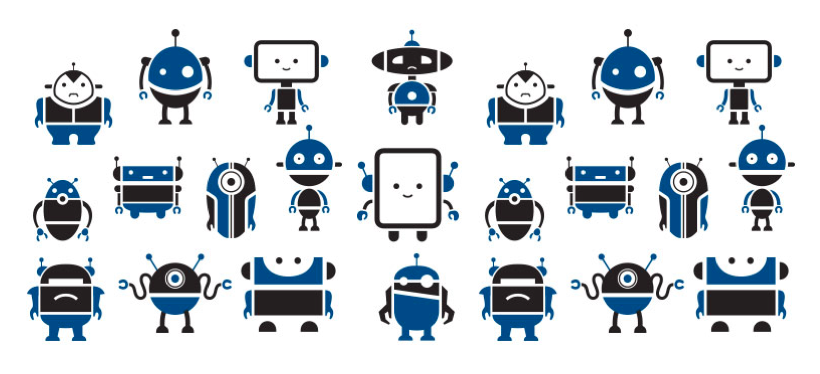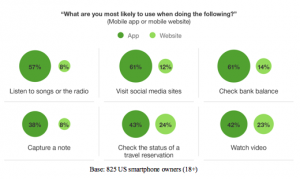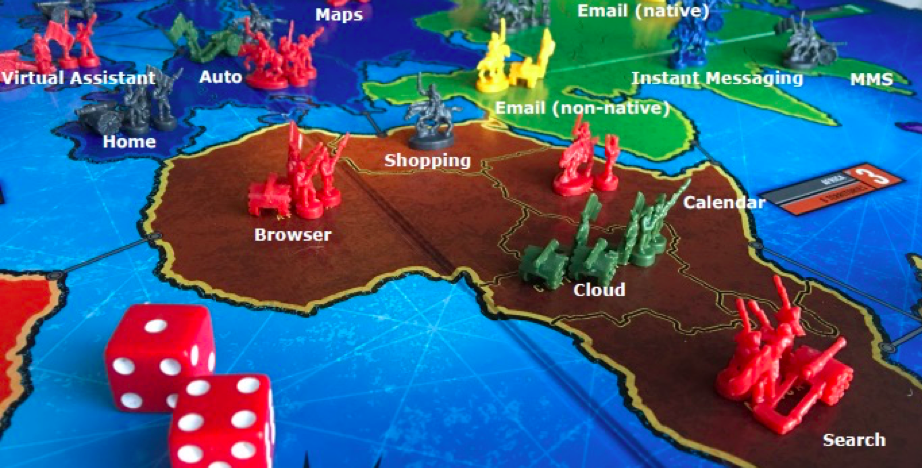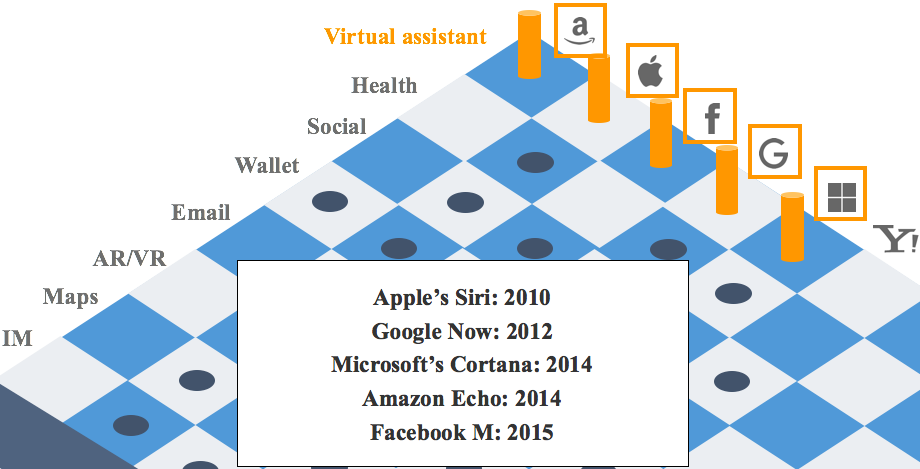 “We’re on a journey here,” says Forrester principal analyst Julie Ask.
“We’re on a journey here,” says Forrester principal analyst Julie Ask.
And what a strange, wonderful trip it is turning out to be.
Marketers already dazed by the overnight emergence of almost 4,000 marketing technology companies and just starting to really take advantage of the mobile revolution are facing yet another disruption: AI, bots, and messaging platforms. Some of us are eagerly jumping on the bandwagon, as Facebook now has 11,000 bots that can help people order flowers, buy food, or fix an issue with their flight. But many marketers are still wondering how, why, where, and … what’s the ROI?

Forrester data on when people use apps today
So many, we had almost 1,000 sign-ups for our live webinar on this topic (see it here for a limited time).
The good news, Ask says, is that we’re at the very beginning of a 10-year journey. So you have some time. And you’ve still got investments to make in mobile and apps for your most loyal and profitable customers
“Mobile apps are still absolutely essential,” Ask says. “We hear people talk about the death of the app, that app usage has peaked … the app is not dying.”
However, some things are are changing.
And we’re seeing the giants of the technology world engage is a full-out war for what Ask calls mobile moments: those instants in time when the stars of consumer desire, product availability, company messaging, and correct context all align in a constellation of right message, right time, right place, right person, and there’s a possibility of purchase.
We’re familiar with the war of search, won by Google. We’re aware of the war in social, won mostly by Facebook. We know about the war over maps, and email, and mobile platforms.

Julie Ask’s game of Risk … with her list of various battlefields
The new war is virtual assistants: Siri, Alexa, Cortana, Hey Google, Facebook M, Viv, maybe Watson, and likely more. The context is conversation, sometimes via natural spoken language, and sometimes via text. These assistants are global, in the sense they are intended to help people manage multiple functions on their phones, control various “smart matter” technology in their homes, and buy products or services from multiple manufacturers.
Amazon’s Alexa is probably the most advanced version of this shipping today, but Siri 2.0 is coming, Google’s Allo is coming, and Facebook M will play in this space too. The big four are now known as GAFA: Google, Apple, Facebook, and Amazon.
One species of assistant, with a limited set of functions and generally, a limitation to your interaction with one company, is bots. Here Facebook, while a latecomer, is the North American leader, and its dream is to connect the three million companies that advertise on the world’s biggest social media platform with the 1.6 billion people who use its services. Achieve that, and Facebook could 5-10X its advertising revenue, which is currently at about $50/user/year in North America.

The virtual assistant chessboard is pretty full of key players
How marketers market, how sales organizations sell, and how customer care personnel support clients are all likely to change as assistants and bots flood the market. And a lot of that will be just-in-time or real-time interaction as people are in the process of making a buying decision, or needing help with a product they already own.
That’s where messaging — and maybe bots in particular — can come into play.
“A lot of times, apps are overkill for the vast majority of interactions that you’re going to have with consumers, and sometimes a micro-moment or instant message is enough, if I glance at it, to get the information that I need to take action.”
The prepare for that future, marketers need to start checking out AI platforms, bot platforms, and especially those bot platforms that allow you to create a bot and provision it with your company-specific intelligence, and then unleash it on multiple platforms simultaneously … something like Gupshup, for instance. Of course, in the world of machine learning and AI, there’s no one-time “training period” for your bot. One of the key reasons you need platforms is because you need something that can learn increasingly more about your and your customers over time, and get smarter and smarter in connecting them and enabling commerce.

Who owns mobile moments today, according to Julie Ask
The good news from Ask, however, is that we have time.
Artificial intelligence is not easy. And while building a bot can happen in a day for a very basic model, building one smart enough to enable and not enrage your customers is not for the faint of heart. The journey that Ask is talking about will take a decade.
And while AI and bots are at the top of the hype cycle right now, their business benefit is going to peak some point in the future that is measured in years, not weeks or months. Which means that now is a good time to start preparing for that future.
Here’s a good start: visit and view the full webinar to get all the insights from Julie Ask, and what you need to start working on today to be ready for AI, bots, and messaging.
Author
Before acting as a mobile economist for TUNE, John built the VB Insight research team at VentureBeat and managed teams creating software for partners like Intel and Disney. In addition, he led technical teams, built social sites and mobile apps, and consulted on mobile, social, and IoT. In 2014, he was named to Folio's top 100 of the media industry's "most innovative entrepreneurs and market shaker-uppers." John lives in British Columbia, Canada with his family, where he coaches baseball and hockey, though not at the same time.



Leave a Reply
You must be logged in to post a comment.